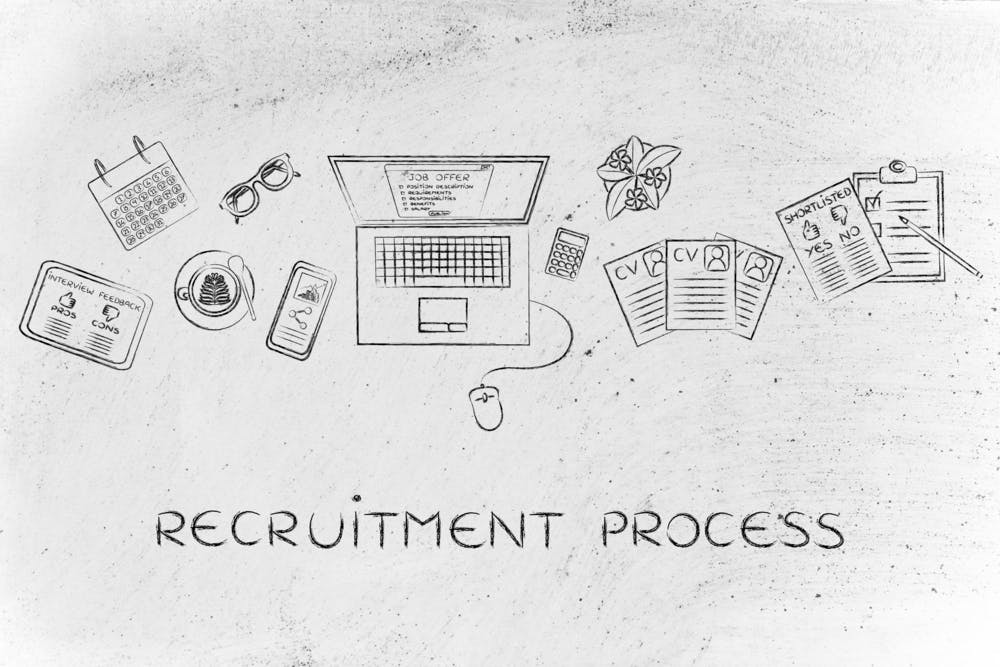As a business leader, you know who makes your company run. (Hint: your employees.) A study by SHRM shows that 95% of recruiters expect recruiting to be as or more challenging next year. Everyone wants to hire and retain the best, so we’re constantly revisiting and questioning everything we’ve ever thought we knew about the sourcing and recruiting process.
I won’t give away every sourcing secret, but I will share with you the three most important questions you need to ask before any sourcing, recruiting or hiring venture. Combined, they bring you the secret weapon you need to keep your talent acquisition process current and aligned to your business.
What does your company look like TODAY?
The business may never change its mission or values, but the team and culture isn’t so stagnant. In fact, one promotion or exit and you’re facing a whole new dynamic in the department or team. While these changes can be exciting for leadership and your employees, benefits and new responsibilities aren’t the only pieces that need to be discussed in process. There should also be extensive consideration of workload adjustments, lost or gained skillsets and the effects on the office environment.
Consider things like where you first anticipated problems or holes and where they actually reside now. Where would a new hire or expert most likely need to be and what skills are pivotal for success in the future? The point is, there are seasons to business and it’s important to continue viewing those changes in the ways they affect the people you have to onboard or plan to onboard.
Fast Fix: Don’t have time for a company wide audit? Instead look at your company through the eyes of your most recent new hires. Take the next step and look at your competitors’ environment, values and language. This can tell you a lot in a short amount of time about where your organization sits in the landscape.
Where is competitive intelligence needed MOST?
Sometimes the most drastic changes reside in the industry as a whole, not an employee phasing up or out. Technology, at its most basic, is an advancement in learning, skills and methods to accomplishing tasks. Today, we like to consider those advancements as they pertain to mobilization, digital updates and data, but everything down to updated regulations and emerging trends affect your talent acquisition process and business model.
Some of these changes will be widely shared knowledge, like DOL rules, while others will be less obvious and specific to business functions or the sector’s landscape. Luckily, most companies know a little something about healthy competition. Staying aware of the trends in your industry can play large parts in the profitability of your current employees and the productivity of your sourcing and recruiting team.
For instance, a 2007 survey by Robert Half suggested globally only 20% of companies intended to adopt employer branding over the next two years, compared with 35% who have no such intention. By 2016, however, LinkedIn’s Global Recruiting Trends shows that employer branding is a top priority for 62% of organizations and 59% of companies are planning to invest more in their strategy than the previous year. Now, we consider mobile job ads to be an important part of our recruitment process, but that wasn’t the case in the past.
Fast Fix: No time or budget to run the numbers? Do a detailed glance at industry blogs, awards and note terms, changes and notable trends. Not only will this help in the industry for which you’re recruiting, it can be a boon to Boolean searches for your sourcing team.
What kind of person will thrive within your culture?
As mentioned, small departmental changes can have large ripples in the atmosphere of your organization. It’s important that the executive team understands what makes the company what it is. Once those mission and values are outlined, they can’t be placed on a shelf to collect dust. They are the very elements that should guide procedures, including how and who you hire to carry out projects.
In 2015, two-thirds of HR managers admitted cultural fit was a contributing factor to employee turnover. Now tack on the hires who haven’t acquired the right skillsets for the job and you have a large percentage of turnover.
There’s no way to know for sure who will stay for the long term, but developing or updating your talent acquisition process to mirror the way you do work within your offices will better the chances of obtaining employees who can handle internal processes. Be sure that the job descriptions have an accurate depiction of duties and requirements as well. With everything clearly laid out, your hiring team will know who to bring on board and your candidates will know what is expected.
Fast Fix: It’s tempting for sourcers and recruiters to overlook the cultural fit piece, but it’s a mistake to do so. Instead, find a free online survey tool like TinyPulse or even Mailchimp to get a sense of what people care about, who thrives and to give you a candidate persona to use next time.
A company’s talent acquisition program should be unique to their business which means that even with all the data and research in our arsenal, successful sourcing and recruiting processes rely on knowing the very personality of a company. Only those who are intimately aware of the inner workings of the organization can create the best solutions and strategies. That means it’s important that your sourcing and recruiting function is devoted to being fully aligned to the structure, industry and culture of your company.
